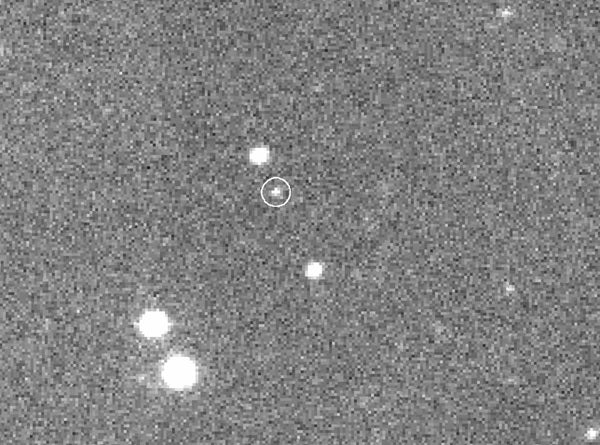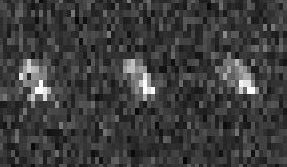Scientists at NASA’s Jet Propulsion Laboratory in Pasadena, California, have obtained the first images of asteroid 2007 TU24 using high-resolution radar data. The data indicate the asteroid is somewhat asymmetrical in shape, with a diameter roughly 800 feet (250 meters) in size. Asteroid 2007 TU24 will pass within 1.4 lunar distances, or 334,000 miles (538,000 kilometers), of Earth on January 29 at 12:33 a.m. Pacific time (3:33 a.m. Eastern time).
“With these first radar observations finished, we can guarantee that next week’s 1.4-lunar-distance approach is the closest until at least the end of the next century,” says Steve Ostro, JPL astronomer and principal investigator for the project. “It is also the asteroid’s closest Earth approach for more than 2,000 years.”
Scientists at NASA’s Near-Earth Object Program Office at JPL have determined that there is no possibility of an impact with Earth in the foreseeable future.
Ostro and his team plan further radar observations of asteroid 2007 TU24 using the National Science Foundation’s Arecibo Observatory in Puerto Rico on January 27-28 and February 1-4.
The asteroid will reach an approximate apparent magnitude 10.3 on January 29-30 before quickly becoming fainter as it moves farther from Earth. On that night, the asteroid will be observable in dark and clear skies through amateur telescopes with apertures of at least 3 inches (7.6 centimeters). An object with a magnitude of 10.3 is about 50 times fainter than an object just visible to the naked eye in a clear, dark sky.
NASA detects and tracks asteroids and comets passing close to Earth. The Near Earth Object Observation Program, commonly called “Spaceguard,” discovers, characterizes and computes trajectories for these objects to determine if any could be potentially hazardous to our planet.











